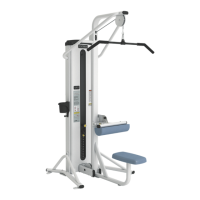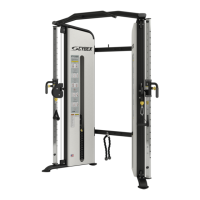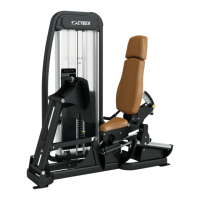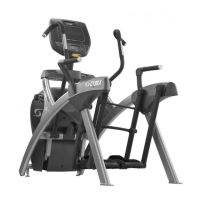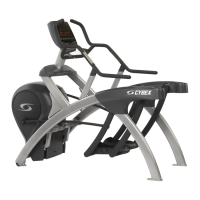The Chest
• Angled Horizontal Plane Adduction - The
clavicular fibers, as well as the upper sternal
fibers, of the pectoralis major are primarily
responsible for adduction of the shoulder
through a plane angled approximately 30
degrees above the horizontal plane of the
shoulder joint. The pectoralis major is also
involved in flexion and extension of the shoul-
der joint, although the anterior deltoid and
latissimus dorsi muscles, respectively, are
mechanically more effective at performing
those motions. The pectoralis major is involved
in internal rotation of the shoulder, however,
this is a mechanically weak motion and
becomes the limiting factor in strength when
combined with other shoulder motions.
• Scapular Retraction - The position of full
scapular retraction, when maintained, creates
the greatest possible force angles of the pec throughout the range of motion.
• Range of Motion - With scapular retraction maintained, horizontal adduction is limited to
approximately 90 degrees (arm straight to the front) and horizontal abduction (achieved
through the eccentric action “lowering of the weight”) is limited by mechanical disadvan-
tage at approximately 0 degrees (upper arm straight out from the shoulder), when pectoralis
work is isolated as the goal.
• Associated Muscles - The anterior deltoid and coracobrachialis are also prime movers for
the motion of horizontal adduction. However, by maintaining motion in the horizontal plane,
scapular retraction, and limited horizontal abduction (limited stretch) the pectoralis major
will be emphasized over the anterior deltoid. The triceps are always involved in pressing
movements as elbow extension is required.
MUSCLES TRAINED
CYBEX VR2 Owner’s Manual
Exercise
Page 3-34
